Going to a foreign country can be a lot of fun, but there’s one problem that people don’t realize when they are planning to travel: how to order food. Many people just assume that when they travel, almost everyone will speak English.
While this tends to be a little bit more common in Western Europe, this is not the case in Eastern Europe and Russia. Having traveled to Ukraine and Russia myself, I’ve learned the tricks of the trade to ordering food at local restaurants and chain restaurants. Here are some go-to words to keep you well fed in Russia.
Вода (vah-dá) – Water

Photo by Lauryn Lahr
We all need to drink water and, most importantly, we need clean water. While in most cities it won’t be a problem, you should avoid drinking the tap water in some cities in Russia such as St. Petersburg.
While the old buildings are what make St. Petersburg so charming, it’s their copper pipes that make the drinking water off-limits (unless it is boiled for a long time). Because of this problem, bottled water is incredibly affordable and tastes fantastic.
#SpoonTip: Buying mineral or seltzer water can sometimes be cheaper than regular water – and it tastes better.
Хлеб (Khléb) – Bread
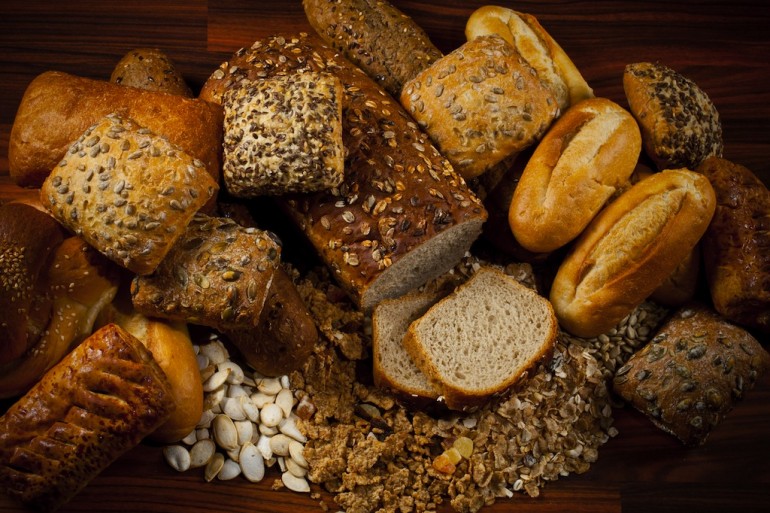
Photo courtesy of nutripromag.com
In Russia, Ukraine and East Europe, bread is one of the main staples. It is used to sop up rich soup broths, accompany pickles and cheese on bread or even meats such as cured pork fat or fish.
There are many varieties of bread, inspired by countries from all over the former USSR. The most popular type is Russian black bread. Check out this recipe and enjoy some with dinner tonight.
Водка (Vod-ka) Vodka
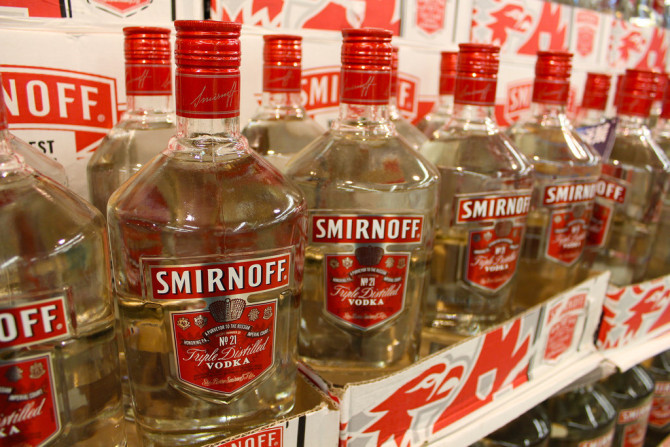
Photo by Abigail Wilkins
Believe it or not, the name of this infamously Russian drink actually means “little water,” which makes sense (even though it’s made from potatoes). It’s the shot of choice at most Russian parties, but before you drink there are a few steps you must take:
- The Toast: Usually, older and/or native Russian speakers will make a toast appropriate for the occasion (i.e. birthdays, weddings, holidays, etc.) and on some occasions they can be 20 minutes long.
- The Wish: There is a key phrase that is used right before any toast (or shot for that matter), “На здоровье” (na zdarovye) which literally means “to health.” A little ironic, right?
- The Chaser: While Americans may chase their shots with cheap beer or juice, Russians and East Europeans often chase shots with pickled herring, salo (cured pork fat) or even a pickle.
If you want to know more about this glorious drink, check out this article about the history of Smirnoff.
Пиво (pí-vo) – Beer
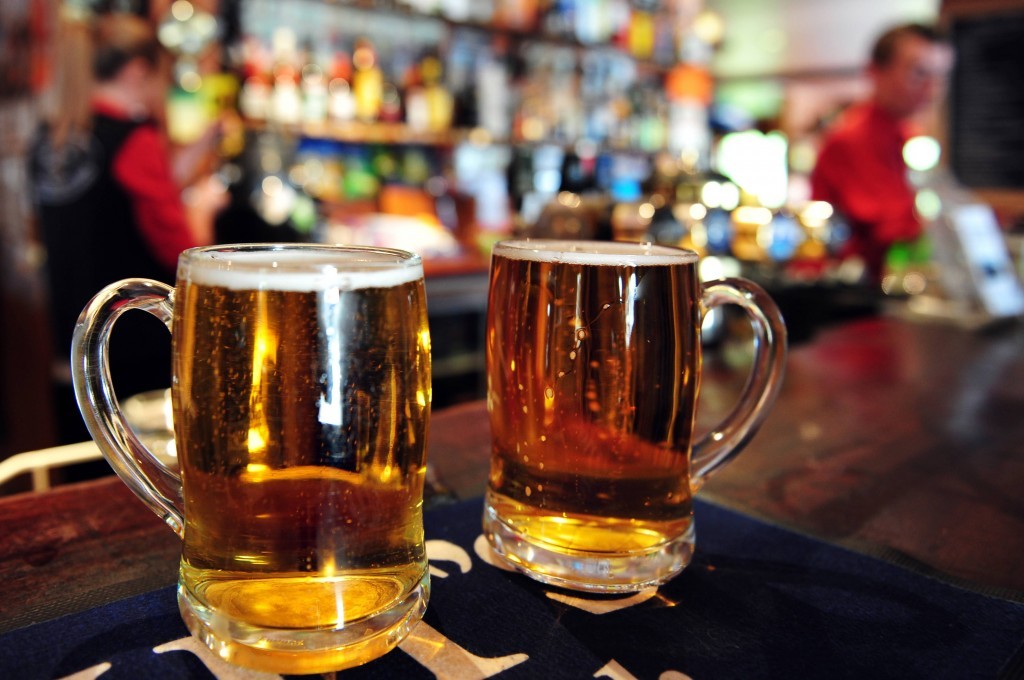
Photo courtesy of The Mave Hotel
Beer – potentially one of Russia’s biggest exports, next to vodka of course. Baltika is the quintessential Russian beer and surprisingly it’s easy to find in specialty markets here in the United States.
They offer a wonderful line of beers, numbered 1-9, varying from IPA-style to a dark lager. You can also get plenty of imported beers including Budweiser, Fosters and more. These favorites might cost you more, so your wallet will thank you if you drink locally!
#SpoonTip: Check out the Baltika brewery tours if you’re looking for a fun, beer-related excursion. They offer tours in a variety of cities, like St. Petersburg, Novosibirsk and Tula.
Квас (Kvás) – Kvass
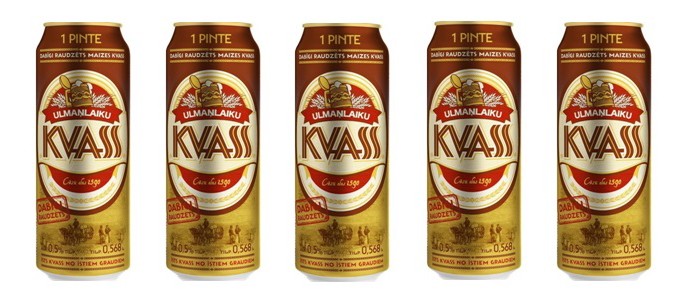
Photo courtesy of craftbeeracademy.com
Beer is great and all, but sometimes you need a cool and refreshing beer without the pain of a hangover the next morning. How is that possible? Kvass! Kvass is a non-alcoholic beer, made from bread. It gives you the taste of beer, but without the inebriation and lower inhibitions.
It’s a delicious drink for any occasion and any season. Some specialty stores carry different brands of Kvass as well.
Борщ (Borsch) – Beet Soup
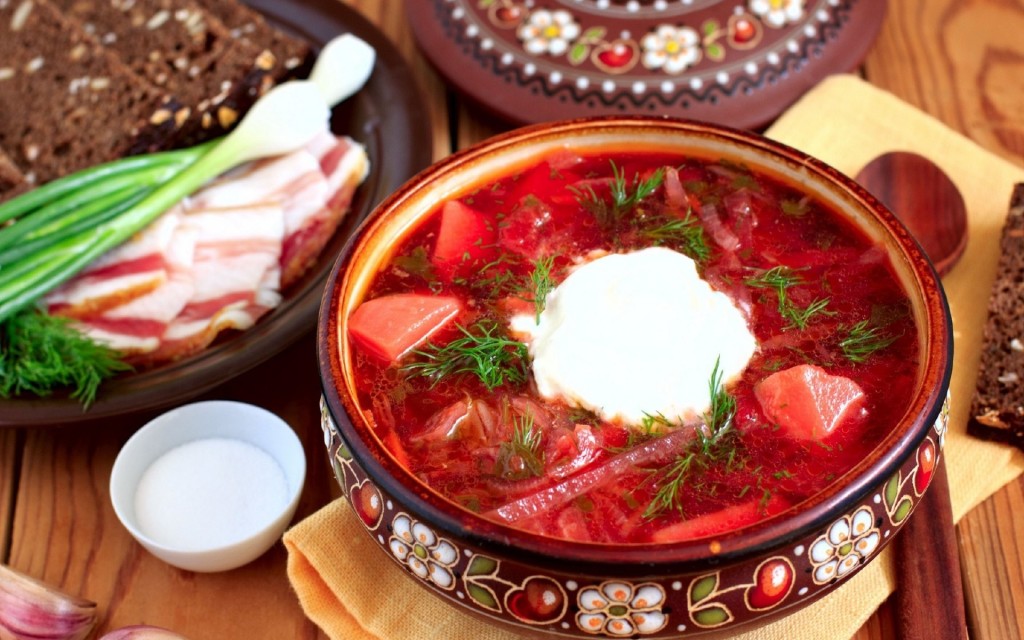
Photo courtesy of picsfab.com
Borsch is the main food that people typically think about when they think about Russia. There are many forms of borsch, some of them don’t even include beets.
While in Russia or Ukraine, you could try classic red (красний/krasniy) with mainly beets, white borsch (белый/beliy) and green borsch (зелёный/zelyoniy) that is made with sorrel (a dark green related to dandelion greens). If you’re in Russia in the summer, you might even get to try cold borsch.
Блины (Blee-niy) – Blini

Photo by Shannon Peters
If you love French crepes, you will love the buckwheat flour version served in Russia. They can be sweet, savory or served plain with soups and salads. Russians eat them all year round, but especially the week before Orthodox Lent known as Maslenitsa (literally “week of butter”).
These are so popular that they have kiosks that sell them in major cities. In the larger cities (St. Petersburg, Moscow and others) there is even a restaurant chain that focuses on them called Teremok.
As you can see, my culinary tour of Russia and Ukraine left me stuffed and satisfied. East European cuisine is hearty, filling and insanely cheap. In fact, it cheaper to eat out at restaurants than to stay in and cook. So the next time you’re in Russia, Ukraine or somewhere in Eastern Europe, be sure to eat like a local.


